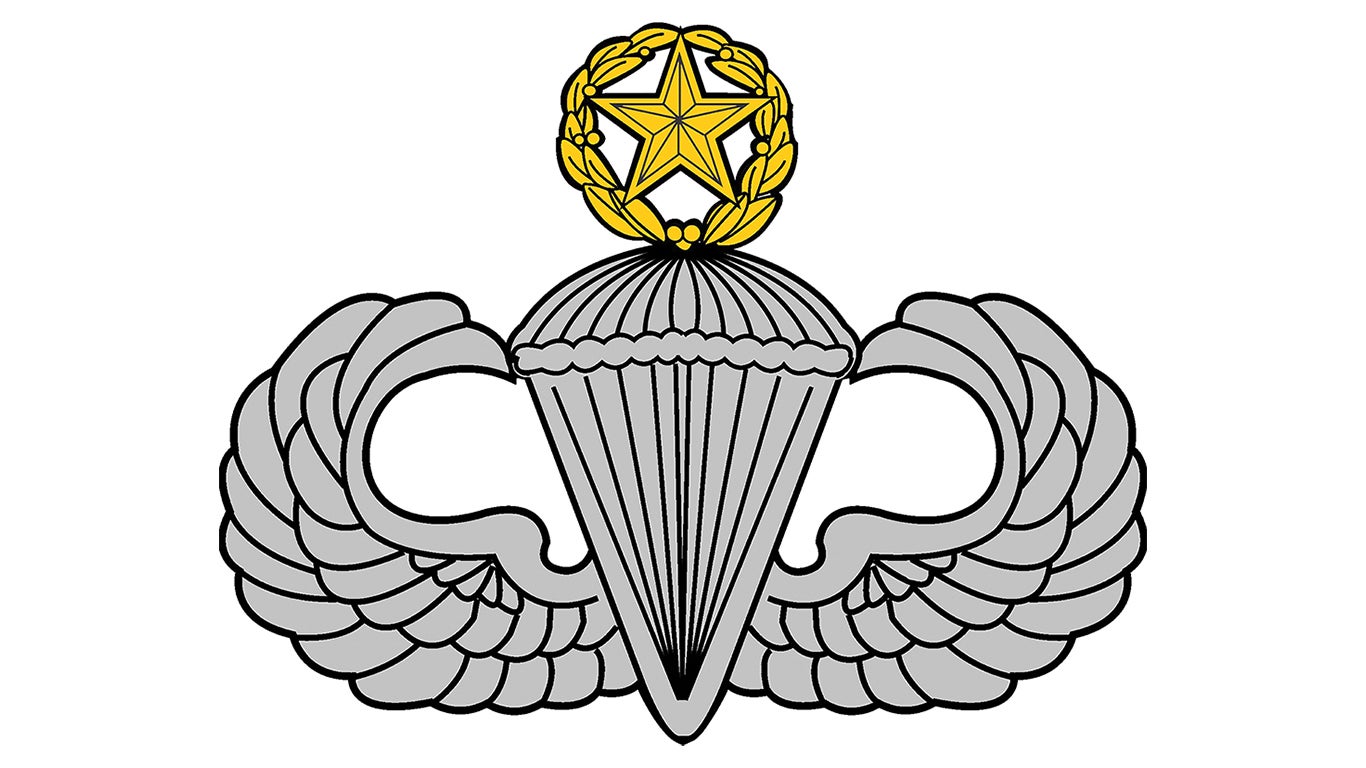“Centurion Wings” are an informal award given to a jumpmaster who has conducted 100 static line jumps. Many of the U.S. Army’s airborne units celebrate this accomplishment by adding the soldier’s name to a plaque in the battalion area or conducting a simple ceremony with fellow jumpmasters after an airborne operation.
Centurion Wings are not worn on a uniform, nor is there any official documentation. But with units already informally celebrating the award, Army leaders should consider formalizing the award and creating a new badge—a Centurion Parachutist Badge—to recognize this career achievement. Badge requirements should include earning the Master Parachutist Badge and conducting 100 static line jumps.
Few jumpmasters achieve Centurion Wings because of the significant amount of time needed to become a jumpmaster and make 100 static line jumps. This accomplishment requires a careerlong dedication to airborne operations, and it is deserving of more than just a small ceremony or placing a name on a plaque that few will see or appreciate.
The Army has roughly 45,000 paratroopers serving on active duty in airborne units around the world. Most soldiers who attend the U.S. Army Airborne School will serve in an airborne unit and continue to conduct airborne operations for the majority—if not all—of their career.
While many will never earn the Master Parachutist Badge, which has long been the pinnacle achievement for a career of service as an airborne paratrooper, all paratroopers know of and have seen others earn accolades for their commitment and professionalism for reaching 100 static line jumps.
Rewarding Excellence
The U.S. military has a rich history of rewarding greatness in and out of combat, as well as recognizing significant achievements throughout a service member’s career. One of the most recognizable of these awards is the Army Parachutist Badge, which has three distinct tiers: Basic, Senior and Master. Each tier denotes a level of experience as a jumper, with the addition of advanced jumpmaster training and accomplishments as the tiers progress.
After the inception of airborne operations in August 1940, when the Army conducted its first airborne training jump, the service began issuing the Army Parachutist Badge to soldiers who completed Airborne School. (The badge was formally approved in March 1941.) Today, the Army Parachutist Badge is still issued to personnel who have completed Airborne School at Fort Moore, Georgia, and it still signifies that a soldier is qualified to exit a military aircraft, at night, with combat equipment, to conduct a follow-on mission.

It wasn’t until 1949 that the Senior Parachutist Badge was authorized in response to the establishment and overall professionalization of the formal school for jumpmasters. The Senior badge is earned by paratroopers who have successfully completed jumpmaster school and conducted 30 static line jumps, including 15 with combat equipment. They also must have conducted two mass tactical jumps with follow-on missions serving in a position equivalent to their rank, conducted at least two night jumps, serving as a jumpmaster on at least one of those jumps, and serving a minimum of 24 months on jump status.
The third tier, which also was authorized in 1949, is the Master Parachutist Badge. The Master badge is earned once a paratrooper has conducted 65 static line jumps, 25 with combat equipment, and five mass tactical jumps with follow-on missions serving in a position equivalent to their rank. They also must have conducted at least four night jumps, serving as a jumpmaster on one of them, and serving a minimum of 36 months on jump status. The Master Parachutist Badge has long been the most formal prestigious award earned by airborne soldiers, but it’s not the last accomplishment that can be achieved.
Well Deserved
That’s where the Centurion Parachutist Badge comes in. Jumpmasters are deserving of this recognition for their demonstration of exemplary commitment and dedication to airborne operations, the airborne community and the Army. Jumpmasters have a long history of successful jumps and selfless service. They are highly trained professionals who have gone above and beyond in their duties and exhibited unparalleled courage and bravery in times of danger.
A Centurion Parachutist Badge would provide recognition for a career of hard work, dedication and loyalty displayed by jumpmasters who otherwise receive no extra incentives while incurring increased responsibility, risk and countless hours of extra duties. It’s a way to show gratitude to these individuals for their service to the country and for their exceptional performance. Furthermore, awarding a Centurion Parachutist Badge to jumpmasters would foster a strong sense of teamwork, esprit de corps and camaraderie in the airborne community. Jumpmasters will feel appreciated for their hard work, and it would serve as an incentive for others to excel in the same way.
Army leaders should look to formalize a Centurion Parachutist Badge and present it to eligible Army jumpmasters. This recognition would help motivate paratroopers to strive for higher levels of excellence and inspire soldiers and future soldiers to attend Airborne School, helping fill the airborne ranks while further addressing the recruiting crisis.
The recommended Centurion Parachutist Badge insignia would mimic the Master Parachutist Badge, the only difference being that the star and wreath adorning the Centurion Parachutist Badge would be in gold instead of silver. All other additions to the badge, such as combat jumps, would remain the same color.
* * *
Sgt. 1st Class William “Nick” Stanfield is an instructor for the Special Warfare Psychological Operations Course, Company C, 5th Battalion, 1st Special Warfare Training Group (Airborne), Fort Liberty, North Carolina. Previously, he was a psychological operations detachment sergeant with the 1st Psychological Operations Battalion (Airborne). He served four combat deployments, three to Afghanistan and one to Iraq. He is a Master Parachutist with 74 static line jumps.

